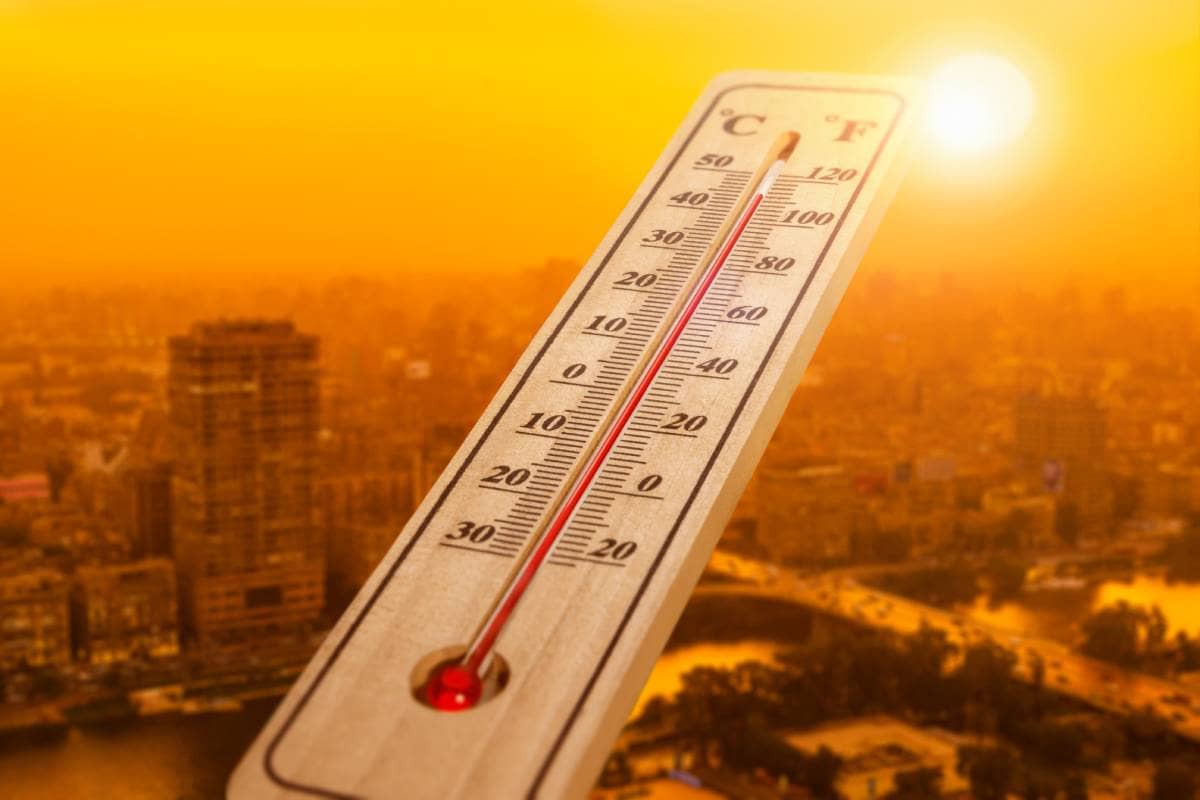
By Dale C. S. Destin
Introduction
268 Weather – A new report from the European Union’s Copernicus Climate Change Service, a close collaborator with the World Meteorological Organization (WMO), has just revealed alarming weather news: June 2023 was the hottest June on record, surpassing the previous record set in 2019.
This scorching month, with sea surface temperatures at unprecedented levels and a record-low area of Antarctic Sea ice, provides further evidence of the far-reaching effects of human-induced climate change.
The report’s implications are significant and underscore the need for urgent action to address the challenges posed by global warming.

Record-Breaking Temperatures
According to Copernicus, June 2023 was over 0.5 °C (0.9 °F) above the 1991-2020 average, marking it as the hottest June ever recorded.
The North Atlantic experienced sea surface temperatures (SSTs) that were “off the charts,” reflecting the intensity of the heat.
These rising temperatures continued into July, typically the hottest month of the year, with preliminary data indicating a new global average 2-meter temperature record of 16.88 °C (62.38 °F) on July 3rd, breaking the previous record set in August 2016.

The scorching June heat also engulfed our little corner of the world, leaving no doubt about the intensity of the summer season.
Initial data reveals that Antigua experienced its hottest June since 1998, ranking as the fourth warmest on record.
Moreover, both the nightly temperatures and SSTs soared to record or near-record highs, painting a worrisome picture of rising temperatures in the region.
Nighttime, in June, brought little respite from the sweltering weather as Antigua witnessed an exceptional rise in nocturnal temperatures.
The mean daily minimum temperature, which represents the night-time heat, shattered the record by reaching a record high of 26.1 °C (79.0 °F).
This marked a significant deviation from the monthly average of 25.3 °C (77.5 °F), underscoring the intensity of the heat and its impact on the island’s residents.
The relentless heat extended its grip over the waters surrounding Antigua and Barbuda and the rest of the Leeward Islands.
Preliminary data on SSTs reveal that June witnessed the second-highest levels ever recorded with 28.9 °C (84 3 °F), based on historical data dating back to 1854.
This places the month 0.9 °C (1.62 °F) higher than the average and in a tie with June 2010 as the hottest for SSTs since June 2005.
The figures highlight the sustained trend of rising ocean temperatures, with January to June 2023 ranking as the sixth warmest period on record.
The Caribbean was also unprecedentedly hot, according to preliminary data. June 2023 SSTs were 0.8 °C (1.44 °F) above the 1991-2020 average of 28.2 °C (82.8 °F), making the region’s seas the hottest ever recorded, breaking the previous record set in in 2005 of 28.9 °C (84.0 °F).

The Role of El Niño
This extreme warmth observed in June and July occurred at the onset of the development of El Niño, which is known to intensify heatwaves and extreme temperatures.
However, El Niño had very little to do with it.
Nonetheless, as El Niño further develops, the impacts of global warming will extend into 2024.
This unprecedented situation presents significant concerns for the planet and demands immediate attention.
Implications for Oceans and Climate
Not only were SSTs at record highs in May and June, but the entire ocean is also warming, with the absorbed energy expected to remain for centuries.
This warming has consequences for fisheries distribution, rainfall patterns, sea-level rise, ocean acidification and ocean circulation, potentially leading to further climate-related effects.
The Copernicus assessment highlights the complexity of the Earth’s system and emphasizes the need for real-time monitoring and adaptation policies to manage risks effectively.
The alarming rise in temperatures across land and sea in Antigua and the surrounding regions raises concerns about the long-term impacts of climate change.
Such heat can have adverse effects on human health, agriculture and food security, coral reefs and the delicate ecosystems that rely on stable temperature patterns.
As we witness these record-breaking events, it becomes increasingly vital to address climate change and implement measures to mitigate its effects.
The North Atlantic Heat Anomaly Cause
Although the exact reasons for the unusual warmth in the North Atlantic are still being studied, the Copernicus report identifies multiple factors that contribute to this phenomenon.
These factors encompass atmospheric circulation, air pollution, and ongoing climate change patterns.
Perhaps the greatest factor was the record-weakest Bermuda-Azores High-Pressure System, resulting in unprecedentedly low atmospheric circulation.
Surface wind speeds play a significant role in the relationship between sea surface temperatures and ocean dynamics.
When wind speeds decrease, the mixing of surface water with the cooler water below is hindered, allowing the sea surface temperatures to rise.
In the case of the northeastern Atlantic, lower wind speeds also affect the upwelling of colder water along the Canary Current, an ocean current that flows southward along West Africa’s coast before turning westward into the North Atlantic near the Cape Verde islands.
Another consequence of weaker surface winds is the reduced westward movement of Saharan dust over the North Atlantic.
This lack of vertical mixing in the ocean, combined with the decrease in Saharan dust, contributes to the rapid increase in sea surface temperatures.
Typically, Saharan dust acts as a barrier, scattering solar radiation and preventing it from reaching the ocean surface.


Conclusion
The findings of the Copernicus Climate Change Service’s report serve as a stark reminder of the urgent need to address climate change.
The record-breaking temperatures in June 2023, coupled with ongoing warming trends and the anticipated development of El Niño, demand immediate action.
It is crucial for governments, organizations and individuals worldwide to work collaboratively to reduce greenhouse gas emissions, mitigate climate change, and develop effective adaptation strategies.
The time to act is now, and failure to do so will only exacerbate the risks and challenges facing our planet.
CLICK HERE TO JOIN OUR WHATSAPP GROUP
CLICK HERE TO JOIN OUR WHATSAPP GROUP
CLICK HERE TO JOIN OUR WHATSAPP GROUP
CLICK HERE TO JOIN OUR WHATSAPP GROUP
CLICK HERE TO JOIN OUR WHATSAPP GROUP
CLICK HERE TO JOIN OUR WHATSAPP GROUP
Advertise with the mоѕt vіѕіtеd nеwѕ ѕіtе іn Antigua!
We offer fully customizable and flexible digital marketing packages.
Contact us at [email protected]

















CLIMATE CHANGE?
It’s called El Nino. It happens every few years. It’s only a problem because they want to make it one, to be solved by some overpriced underthought solution that involves abusing people’s rights
“El Nino” is fake!! Ask Trump n Obama
Do not add Obama in your ridiculous response.
TOO LATE, TOO LATE, shall be the cry!
There’s no turning back now. GODS prophecy must and shall be fulfilled.
CO2 sustains plant and animal life through its role in photosynthesis.
https://thelightpaper.co.uk/
Comments are closed.